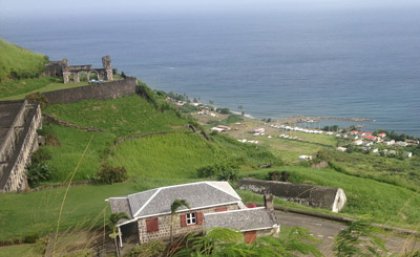
A cultural heritage expert from The University of Queensland Law School is working with UNESCO to protect historically significant shipwrecks in the Caribbean.
Associate Professor Craig Forrest assisted UNESCO in drafting a model law to help common law Caribbean countries to implement the UNESCO 2001 Underwater Cultural Heritage Convention.
“The Convention is designed as a cooperative framework to protect underwater heritage that has a cultural or historical character and offers vital historical data about significant events and the way local communities lived and interacted with each other,” Dr Forrest said.
“Due to their trade route locations and colonial history, these Caribbean Island States are rich in submerged heritage but currently have few laws to protect it from pillaging or commercial exploitation.”
The model for a National Act on the Protection of Underwater Cultural Heritage was produced at a UNESCO workshop in June attended by representatives from Anguilla, Antigua and Barbuda, Aruba, the British Virgin Islands, St Lucia, St Maarten and St Kitts and Nevis.
Dr Forrest co-chaired the meeting to discuss the model law and to draft preliminary national laws to implement the Convention and to extend its protective regime to terrestrial cultural property.
He said that many countries had ratified the Convention but its effective adoption was often hindered by a lack of knowledge of its concept and mechanisms at local level.
“This meeting was an opportunity to discuss some of the challenges in harmonising national laws which protect sites that have both scientific and economic importance,” Dr Forrest said.
“It was also a chance to highlight these issues to encourage other States in the region to ratify the Convention and to adopt legislation based on the model law.”
UNESCO estimates that there are about three million historical shipwrecks and thousands of underwater ruins, cities and prehistoric sites around the world.
Dr Forrest said that in the past, insufficient legal protection has led to the theft and destruction of artifacts from these sites.
“The preference under the Convention is to preserve sites in situ, which offers the Islands valuable opportunities for sustainable underwater tourism development and recreation,” he said.
“Implementing national laws to protect these sites will ensure that they can be enjoyed by future generations.”
Dr Forrest teaches and researches in the areas of private international law, cultural heritage law and maritime law, and is Director of the Marine and Shipping Law Unit at the UQ Law School.
He has a long association with UNESCO having been a member of its South African delegation to draft the Convention on the Protection of Underwater Cultural Heritage from 1999-2001, and in his capacity as an advisor to UNESCO in regional inter-governmental meetings in the South Pacific and Asia.
Media: Associate Professor Craig Forrest, 07 3346 9027, c.forrest@law.uq.edu.au. Melissa Reynolds, TC Beirne School of Law, 07 3365 2523, m.reynolds@law.uq.edu.au.
.jpg)












